A Local’s Guide to Kenai Fjords National Park
A visit to Kenai Fjords National Park will not be your average National Park experience. Unique in its location, scenery, and activities, Kenai Fjords National Park should be on the “to-visit” list of every National Park lover.
I have the amazing privilege of living right next door to this National Park, and it has become a goal of mine to share its unparalleled beauty with as many people as possible.
Whether you’re already planning a trip to the park or simply researching for your next big vacation, read on to get a local’s guide to the incredible Kenai Fjords National Park!
A Local’s Guide to Kenai Fjords National Park
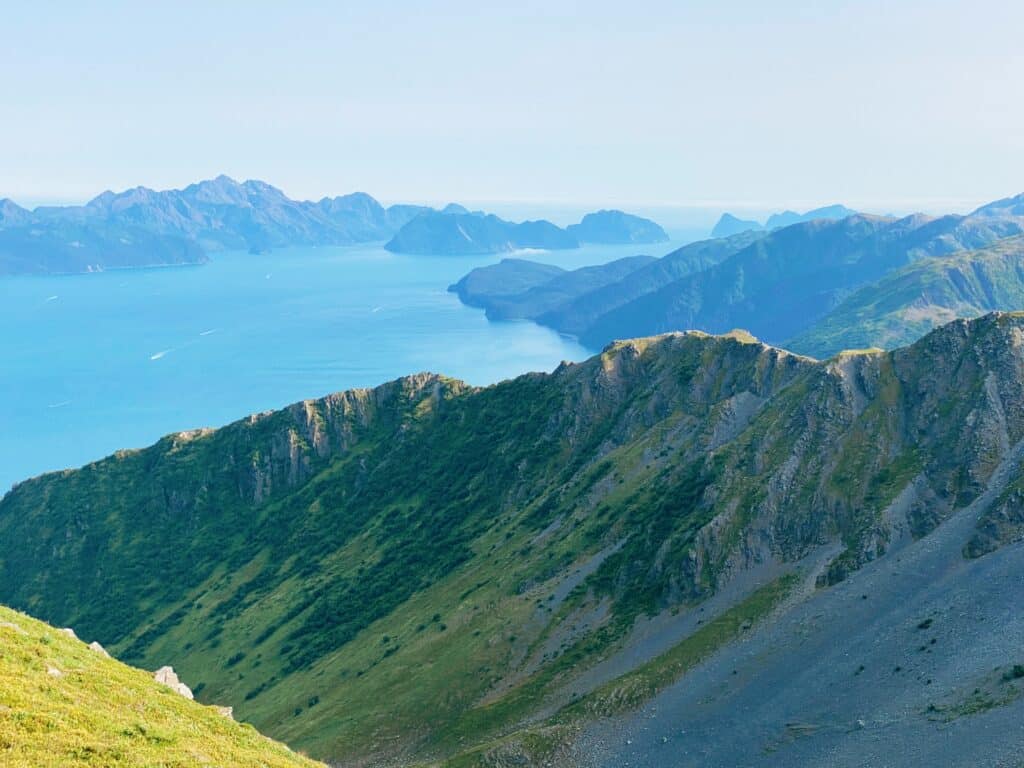
An Overview of Kenai Fjords National Park
South-central Alaska can be boiled down to just a handful of words: lively, unpredictable, and profoundly beautiful.
Never in my life had I experienced a location that fully embraced the descriptor wild until I finally found myself on the Kenai Peninsula. And now it feels impossible to leave!
History of the Land
The land now covered by Kenai Fjords National Park was once the home of Alaska Natives for over a thousand years. The Sugpiaq (Altuiiq) native people once had camps up and down the coasts of the Kenai Peninsula, surviving off the land without the large-scale domestication of plants and/or animals. Their history is one of constant adaptation; a perpetually changing landscape leaves little time for rest.
Being that the Altuiiq lived as a coastal people, the ocean dictated much of what they did. Kayaking was a staple in their lives, used for fishing, hunting, gathering, and travel.
The Port Graham Corporation, founded by descendants of the Kenai coast natives, still owns land within the borders of the National Park (over 42,000 acres).
This land was first designated as a National Monument in 1980 by President Jimmy Carter, and then as a National Park in 1980 following the Alaska National Interest Lands Conservation Act.
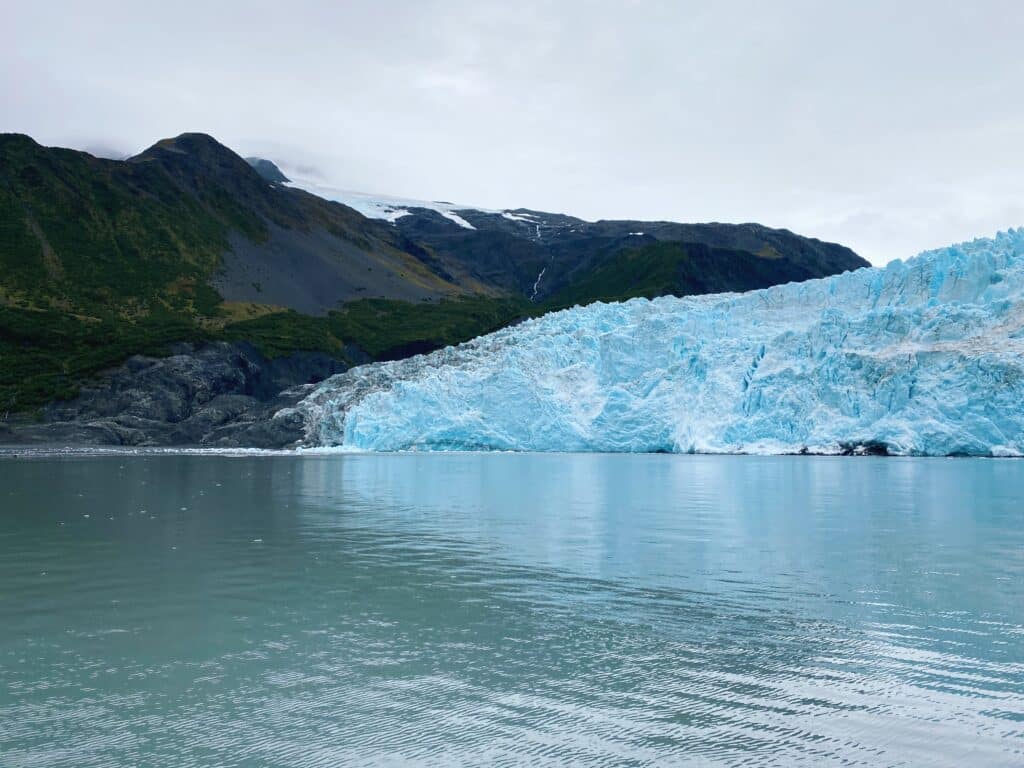
Location
Located just 2.5 hours south of Anchorage, Alaska’s largest city, Kenai Fjords NP is one of the most accessible parks in the state. This is shown in the fact that Kenai Fjords NP is the fifth most-visited park in Alaska out of the thirteen it holds. After catching a flight to Anchorage, it’s simply a matter of taking a scenic ride down the Seward Highway.
Park Headquarters
The parks’ headquarters are located in Seward; a small seaside town that I am proud to call home. Stop in for a visit to the Kenai Fjords National Park Visitor Center located in the small boat harbor for a quaint but enjoyable exhibit about the park. Park rangers are also there to answer any questions you may have.
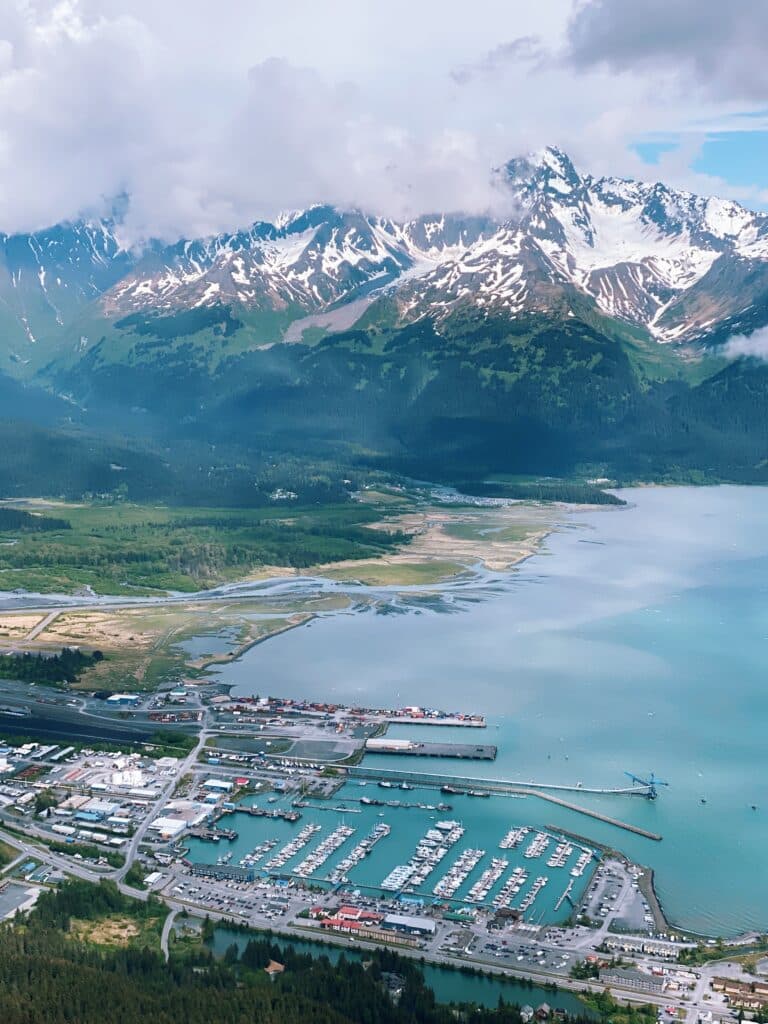
Small Park, Big Adventure
Kenai Fjords NP is a relatively small National Park, measuring in at 669,984 acres. This makes it the smallest National Park in Alaska. But don’t let the size fool you. There is much to explore within the borders of the park. One of the best aspects of Kenai Fjords NP is the freedom of choice; you get to decide how to explore the land graciously set aside for public use, and the options are plentiful.
(Later on, we will explore the options offered to a visitor.)
Year-round Excitement
Technically, the park is open year-round. This comes with a few “but’s“, however.
Alaska provides beautiful summers, and that makes for an excellent time to visit the park. The peak season for Kenai Fjords National Park is June, July, and August.
By the end of May, most areas of the National Park will be open and accessible. This is subject to the weather, of course. For example, the 2020/2021 winter was a rather harsh one, and as I write this on May 27th there is quite a bit more snow to melt before every area is reachable.
A winter visit to the park will be rather limited compared to the summer, but is possible! Cross-country skiing is a popular activity, as well as snowmobiling and snowshoeing. There is also one company in town that offers winter boat tours (Seward Ocean Excursions).
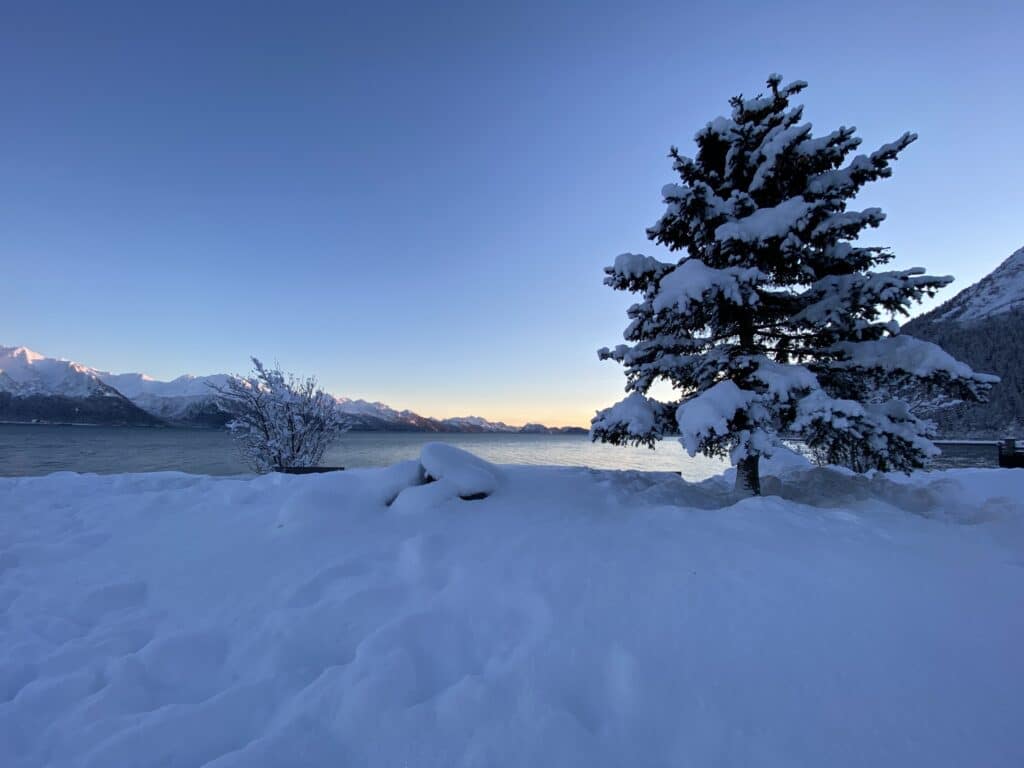
Geography: Where Ocean, Mountains, and Glaciers Meet
Kenai Fjords National Park is a remarkably diverse area, even though its size wouldn’t lead you to believe it.
A rugged coastline stretches far inland; a very obvious signature of the ancient icefield that once covered much of Alaska. With a changing climate, this icefield labored away at the rocky terrain below it, creating extravagant fjords, the namesake of the park. Moving inland, long valleys are found where glaciers once stood; the stamp of time embedded in the landscape.
The Harding Icefield
In fact, 51% of the park is covered in ice. This outrageously high percentage is all thanks to the Harding Icefield, a massive 700 square miles of ice that reaches depths up to approximately 4000 feet.
One of only four icefields that remain inside the U.S., the Harding Icefield is the largest icefield found entirely within U.S. borders. The icefield regularly hosts extreme weather, particularly over the winter. On average, it receives 60 feet of snow per year… incredibly hard to imagine.
The Harding Icefield is the source of nearly 40 different glaciers of all types, ranging from tidewater to hanging glaciers. All throughout the park, you simply have to look around you in order to spot a glacier. They’re everywhere!
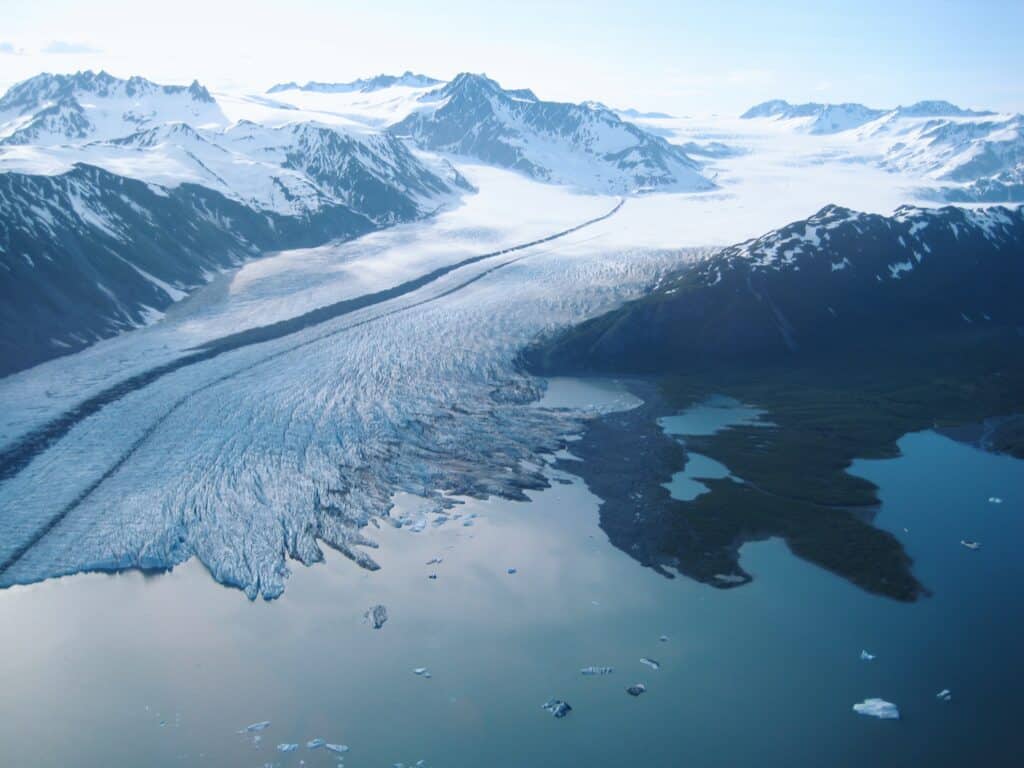
Bear Glacier flowing from the Harding Icefield. Photo courtesy of the NPS.
Bear Glacier
The largest glacier that flows from the Harding Icefield is Bear Glacier, a 15.5 mile long tidewater glacier. Easily seen from the waters of Resurrection Bay, Bear Glacier is a sight to behold. While it does require a boat ride or tour in order to see the flowing river of ice, many activities are commonly carried out in the lagoon surrounding the toe of the glacier.
Exit Glacier
Out of all the glaciers sourced from the Harding Icefield, Exit Glacier is by far the most accessible. The Exit Glacier area is the only portion of the park that is reachable by road. This fact may turn a lot of people away from visiting the park, but don’t let it discourage you. If adventure is what you seek, then Kenai Fjords National Park holds its arms wide open.
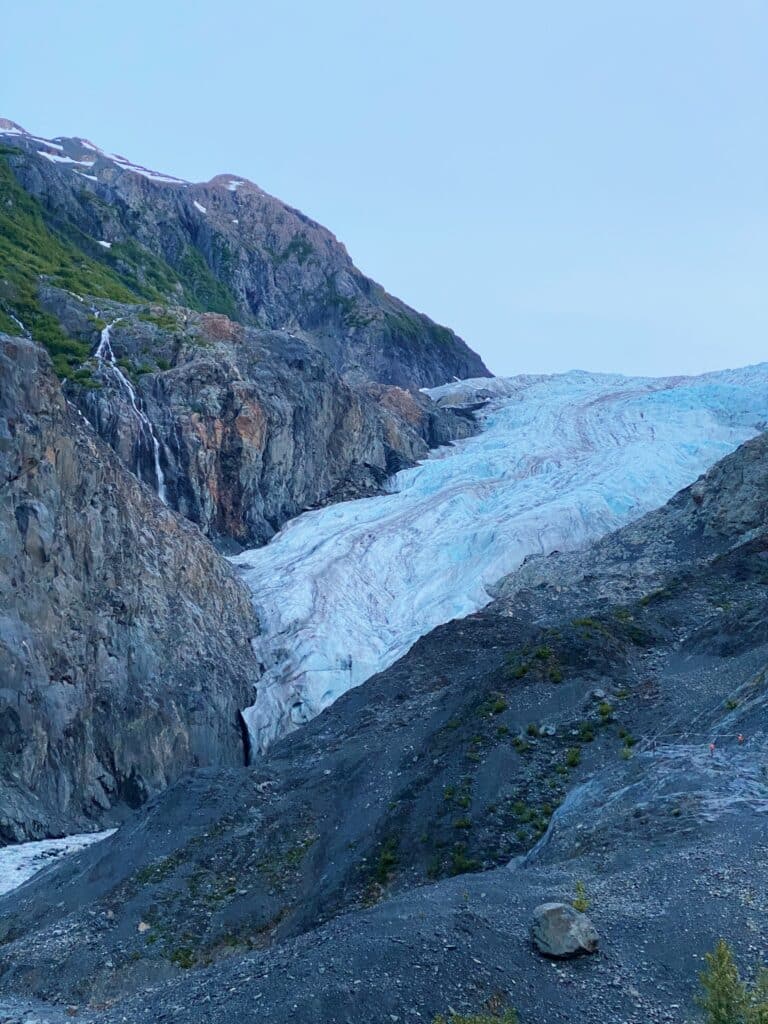
Ecology, Wildlife, and Climate: A Pristine Wilderness
Even though this land could be considered quite harsh, the diverse array of plant and animal life supported by the land is astounding.
Climate
Kenai Fjords National Park is considered to be in a subarctic climate. This means cool, mild summers with year-round precipitation.
The Fjord Estuary Ecosystem
Kenai Fjords is a rather rare natural phenomenon. The National Park and surrounding areas are classified as a fjord estuary ecosystem, an ecosystem found in only six other locations on Earth. An estuary is defined as an area where fresh water from a river or stream meets the open, salty sea. A fjord estuary is a type of estuary created by a glacier that has carved out a valley, which is then flooded by the ocean.
In this way, fresh water from glacial streams converge with the sea, carrying with it glacial sediment that in turn colors the ocean a tone of grey. This sediment holds many nutrients (e.g. calcium, potassium, magnesium, & iron) that enrich the waters of the fjord .
This fertile water and land gives rise to a varied network of life, and this is only possible because of the precise series of events that led to the formation of the landscape.
The parks’ history of glaciation, or rather the retreat of glaciated areas, has allowed new areas once covered by ice to become home for an assortment of new plants and animals. According to the NPS and other leading scientists, anthropogenic climate change is increasing the pace at which this process happens. This disruption of the natural cycle holds consequences, some of which we are only just beginning to understand. Read more about this here.
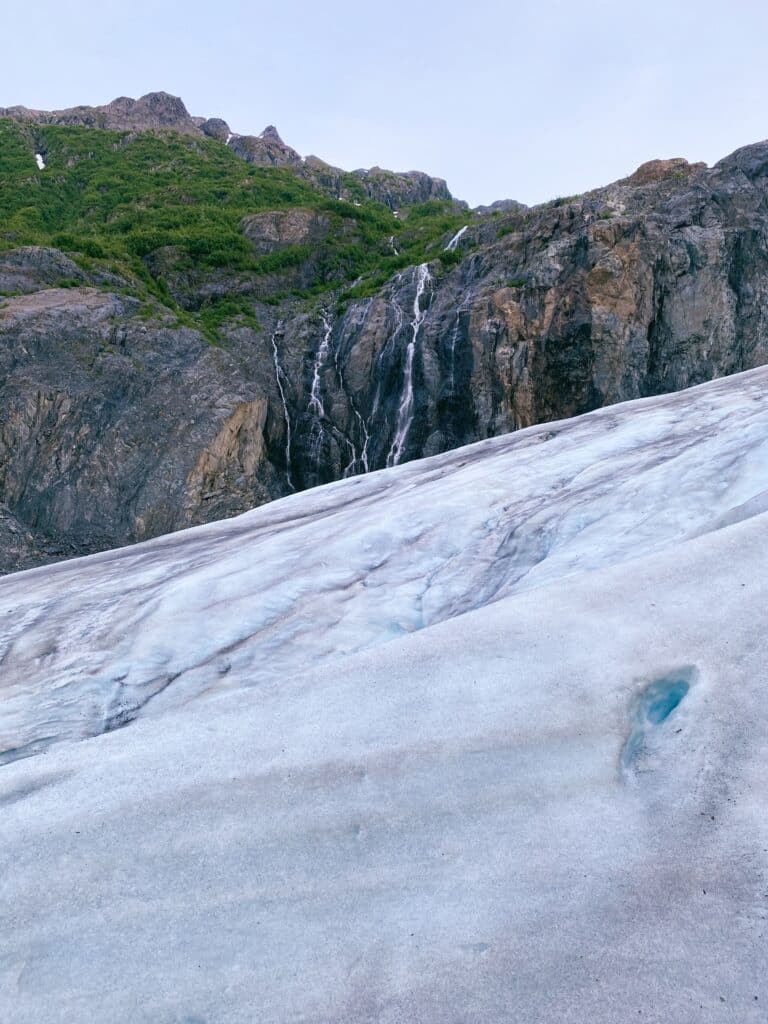
Land Mammals
A vast array of land-dwelling mammals exist within the park. If you’re lucky, it’s possible to spot approximately 27 different species. I won’t list them all here, but here is a list of the most common mammals to see on land:
- Brown bears (Ursus arctos)
- Black bears (Ursus americanus)
- Moose (Alces alces gigas)
- Mountain goats (Oreamnos americanus)
- Hoary marmot (Marmota caligata)
Birds
This one’s for all of my birders out there. Coastal Alaska is often considered a “birders paradise”. Over 190 species of birds have been seen in the park. One hundred and ninety. If you’re on a birding mission, you better bring a long checklist. Here is a greatly abbreviated list of common birds found in Kenai Fjords NP:
- Bald Eagle (Haliaeetus leucocephalus)
- Black Oystercatcher (Haematopus bachmani)
- Murres (Uria aalge, Uria lomvia)
- Marbled Murrelet (Brachyramphus marmoratus)
- Horned Puffin (Fratercula corniculata)
- Tufted Puffin (Fratercula cirrhata)
- Steller’s Jay (Cyanocitta stelleri)

Marine Mammals
Much of the National Park is explored via the water. It’s for this reason that, when a visitor thinks about wildlife in the park, most people will automatically think about marine mammals. Sighting a marine mammal can certainly be awe-inspiring.
An interesting thing to note, however, is that the boundaries of Kenai Fjords National Park do not extend into the waters surrounding it. Despite this, the Alaska National Interests Lands Conservation Act specifically lists the protection of marine mammals and the waters they inhabit as a goal of the National Park designation.
Here’s a short list of the marine mammal variety found in the park:
- Sea Otter (Enhydra lutris)
- Steller Sea Lion (Eumetopias jubatus)
- Harbor Seal (Phoca vitulina)
- Dall’s Porpoise (Phocoenoides dalli)
- Orca (Orcinus orca)
- Humpback Whale (Megaptera novaeangliae)
- Gray Whale (Eschrichtius robustus)
- Fin Whale (Balaenoptera physalus)
- Minke Whale (Balaenoptera acutorostrata)

Plant Life
Plant life in Kenai Fjords National Park is equally as diverse and resilient as the wildlife. As I mentioned earlier, glacial retreat is shaping much of the ecosystem of the plants in the park. As ice retreats, new, rocky land is exposed. Larger plants species don’t automatically pop up, though. Trailblazers such as mosses and lichens quickly take advantage of the newly bare land, and immediately begin breaking down the bedrock into a thin layer of fertile soil.
With this primary colonization out of the way, other “pioneer species” are able to grow. Fireweed, willows, Sitka alders, and Sitka spruce are all succeeded by one another.
There exists three main types of plant communities in the National Park: coniferous forests, deciduous forests, and alpine plants. Each of these three communities depends on different conditions in order to prosper, but they all find their comfortable home on the Kenai Peninsula.
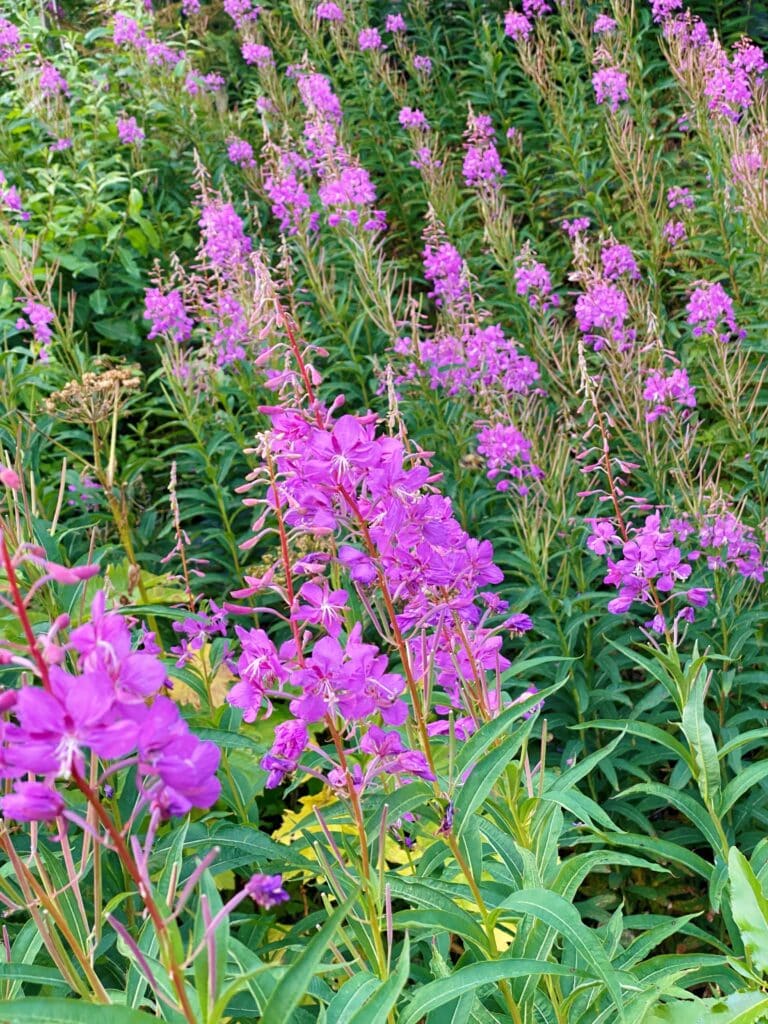
Fireweed in full bloom
Ways to Explore Kenai Fjords National Park
Experiencing the National Park is simply a matter of deciding which activity best suits your interest. There are many to choose from, and the more you choose to pursue, the deeper your appreciation for Kenai Fjords NP will be!
Boat Tours of the Park
As I mentioned earlier, Kenai Fjords National Park is most often explored via the water. Trails are scarce in the park, so choosing to hop on a boat in order to acquaint yourself with the land is a very good option.
The boats will typically take you through Resurrection Bay, past Bear Glacier, into the Gulf of Alaska, and around the many islands that dot the ocean. Perhaps the most popular destination for glacier-viewing is in Aialik Bay. This bay holds the termini of two different tidewater glaciers: Aialik Glacier and Holgate Glacier. You will usually spend around half an hour in front of the glacier, quietly waiting for a glacial calving event. The thunderous boom of ice breaking off from the face of the glacier produces a feeling that doesn’t leave your mind for quite a while.
If a boat tour is starting to sound nice, check out the article I wrote all about the different options for boat tours in Seward, Alaska.
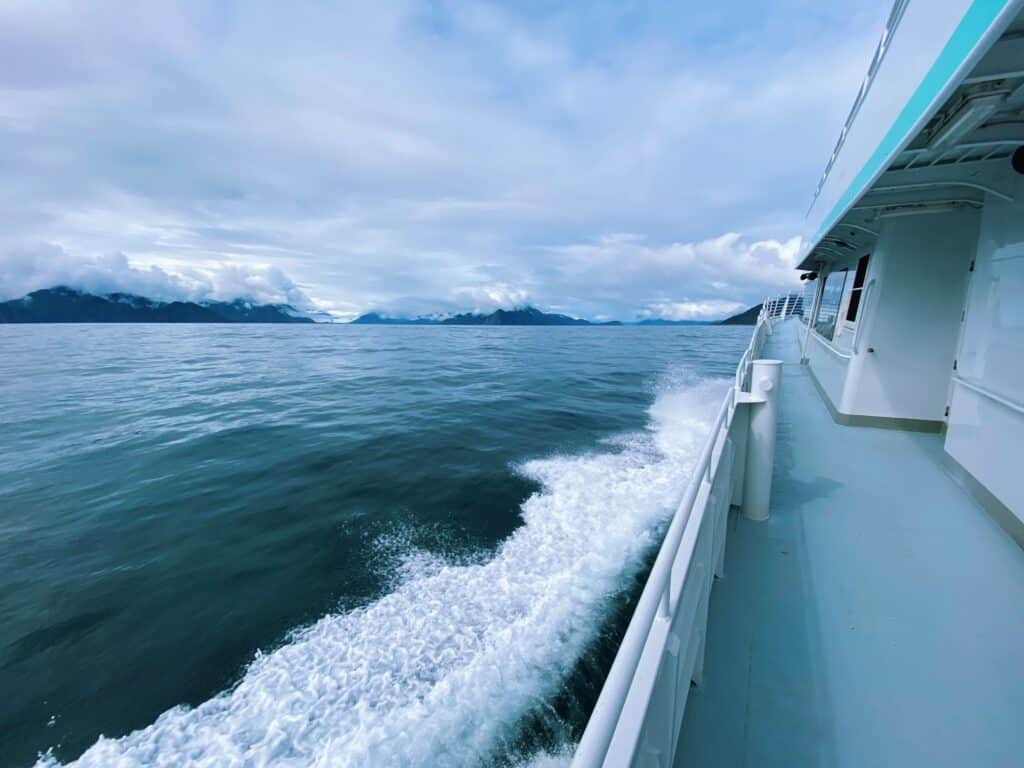
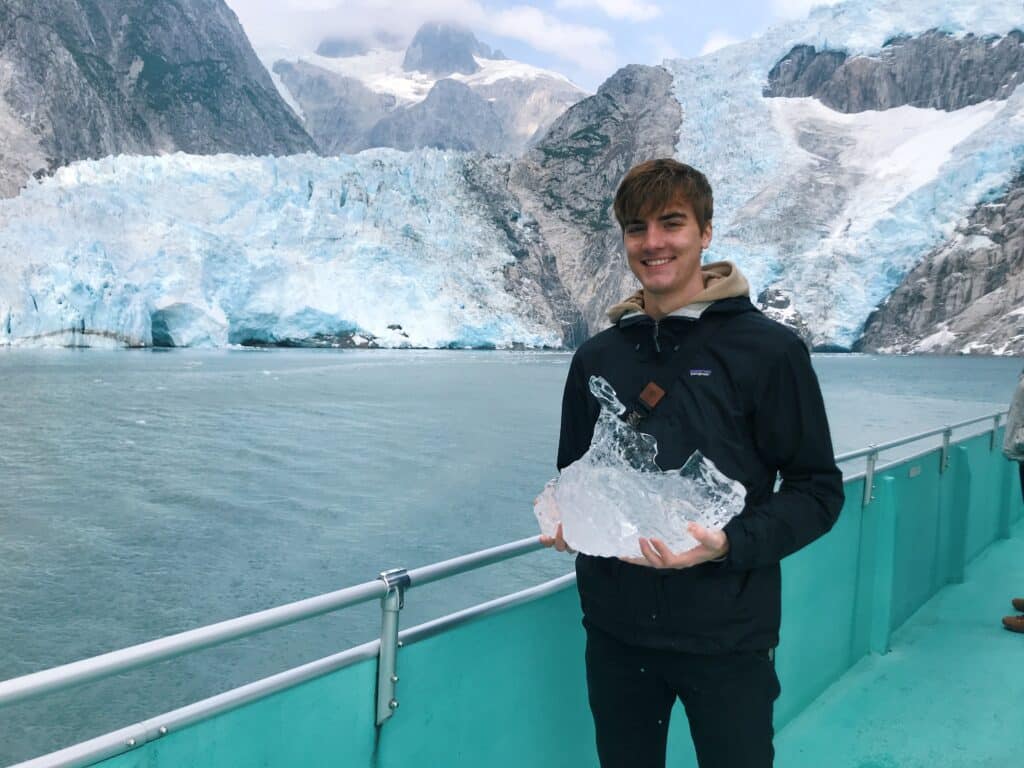
Me holding by first “bergy bit” during my first summer in Seward
Sea Kayaking
Sticking with the water theme, sea kayaking is another way to explore Kenai Fjords from the ocean. There are many different companies that offer a plethora of options for an eager adventurer.
Sunny Cove Sea Kayaking, a company that I have experience with, is one example. They provide visitors with top-notch kayak tours ranging in both intensity and price. Whether you are a seasoned kayaker who wants to venture further into the wild, or someone who has never kayaked in their life, you are sure to find an option that suits your needs.
Paddle in Resurrection Bay, head to Tonsina Point, or even kayak in front of a glacier; the possibilities are exciting!
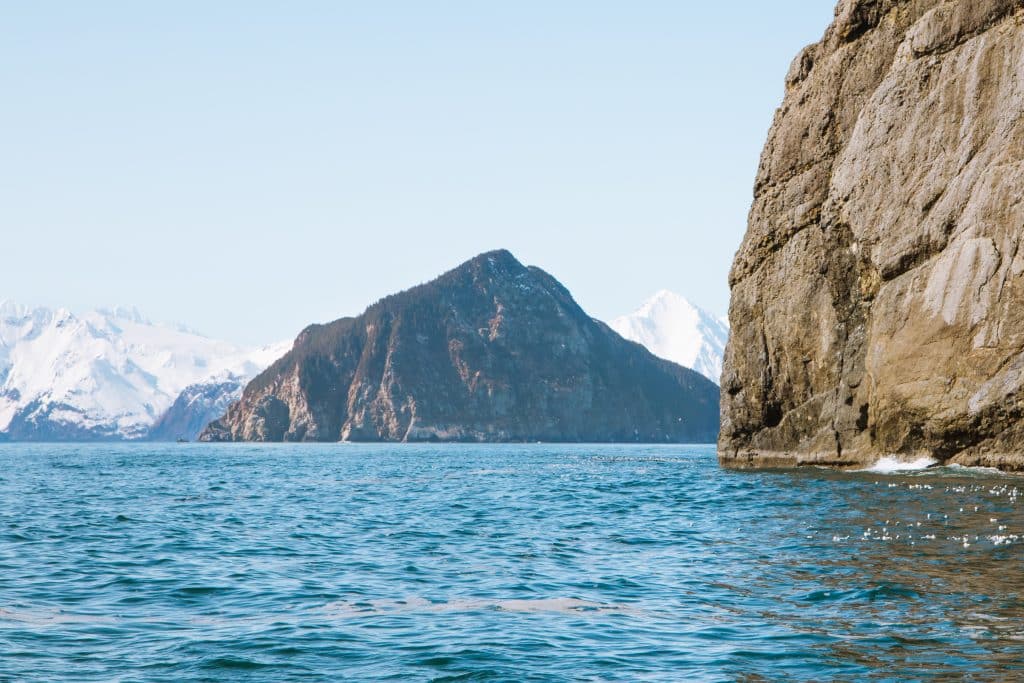
Hiking and Backpacking
Hiking trails within the borders of the National Park are limited. The only trails that are maintained in the park are located in the Exit Glacier area:
- Exit Glacier Overlook: A short hike that leads to a great view of Exit Glacier. Great for families and other groups that want a simple but beautiful walk.
- Outwash Plains: An off-shoot trail from the Exit Glacier Overlook trail that allows you to freely walk on the rocky plains in front of the glacier.
- Harding Icefield Trail: The main hiking attraction in the park. This trail is a strenuous 8.2 mile out-and-back trek that offers some of the most spectacular views of Exit Glacier and beyond. Once you reach the top, the Harding Icefield stretches out for miles and miles ahead of you. It is possible to camp overnight with a view of the icefield, but flat land can be hard to come by. Especially if other backpackers have already set up their camp.
Backcountry travel is possible, but not necessarily encouraged. Most of this land is steep and rocky, which requires a keen eye and extreme caution. Be sure to fully educate yourself on the necessary equipment and practices for backcountry travel before heading out.
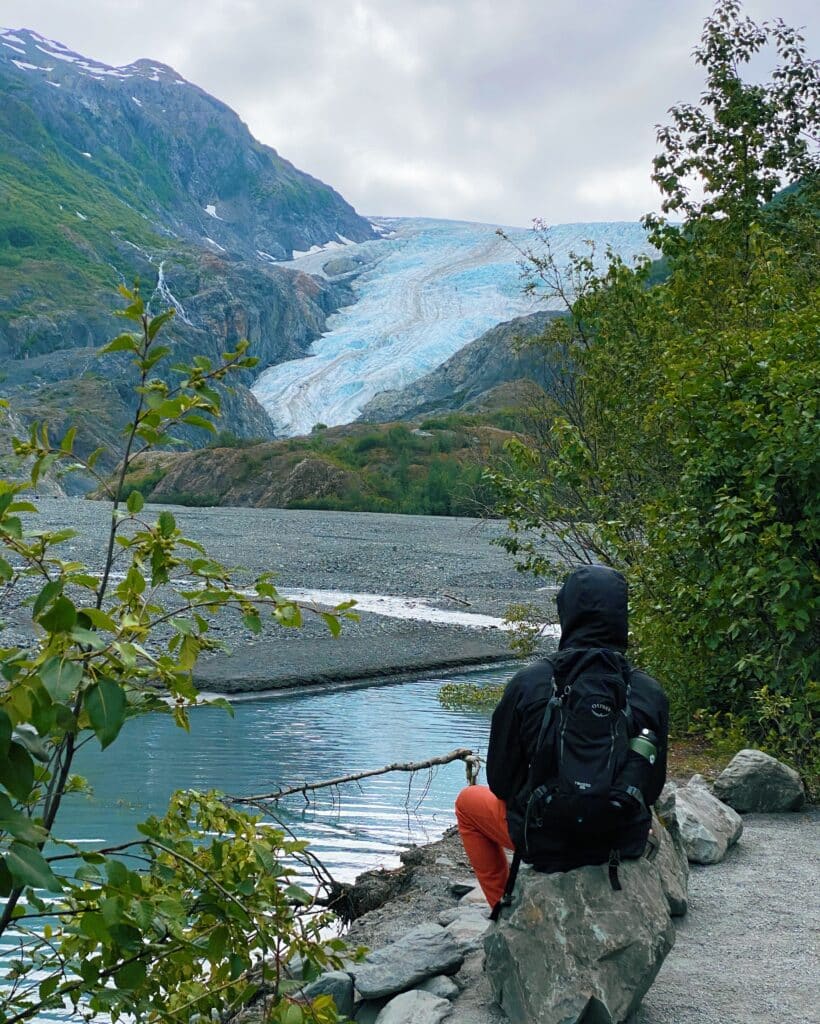
Guided Expeditions
Have you ever wanted to ice climb on the face of a glacier? Well, you’re in the right place. Guided expeditions are a great way to experience an extreme activity (such as ice climbing, ice hiking, and mountaineering) with the support of professionals that are there to ensure your safety.
Exit Glacier Guides is one such company. They’ve been operating guided trips on Exit Glacier and in the surrounding area for 16 years now. If you desire a more intense adventure than going on a hike or boat tour, definitely consider booking a guided expedition!
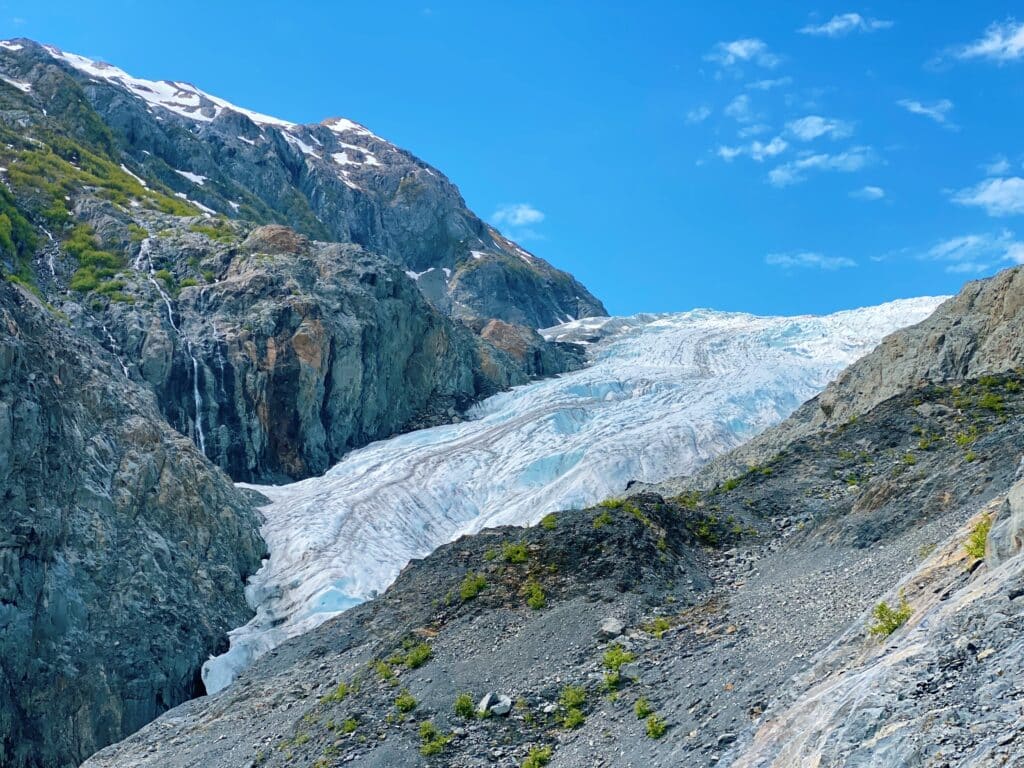
Safety in the National Park: Be Smart!
Preparation is key. Always keep in mind that Alaska is a wild and unpredictable place.
Cell Service
- Be aware that cell service is limited: Alaska’s cellular infrastructure is… lacking, to say the least. Take this into consideration whenever venturing into the National Park.
Wildlife
- Respect the wildlife: With any wildlife you see, be sure to leave a lot of room for the animal to breathe.
- Never purposefully approach wildlife.
- Never feed wildlife: Feeding wild animals carries the consequence of causing them to become comfortable with human interaction. Nobody wants a bear to ask them for food.
- Keep a clean campsite: The NPS recommends cooking and eating your food away from your campsite. When storing your food, keep it inside a vehicle if possible, or stow it away in a bear bag that is then hung from a tree.
- Leave no trace: When visiting any National Park, you want your impact on the land to be minimal (non-existent if possible). Do not leave any trash, scraps, or equipment behind when hiking or camping. This is not only for the sake of the wildlife, but also for your fellow human beings that are trying to enjoy the park.
- Respect the fact that these animals are wild, and that you are coming into their home.
Foraging
- Use caution when foraging: Many edible plants and berries exist within the park borders and surrounding areas, but never commit to eating anything that you haven’t 100% positively identified.
Trails and Backcountry Travel
- Watch your step: In many areas, snow and ice coverage is still considerably large. Be mindful of this while on any trails within the park.
- Dress appropriately: Dress in layers. Weather is unpredictable and can become extreme at a moment’s notice. Warm layers and waterproof rain protection are a good idea.
- Travel in groups: A general rule of thumb is to travel in numbers, particularly if this is your first time in the area. Always let a couple of other people (that are not hiking/camping with you) know your itinerary.
- Leave room for delays: The unpredictable nature of this area can lead to some surprisingly sudden changes. Weather can affect how easily one is able to travel on the water/in the backcountry, so avoid having a very tight schedule. The people you share your itinerary with should be aware of this as well.
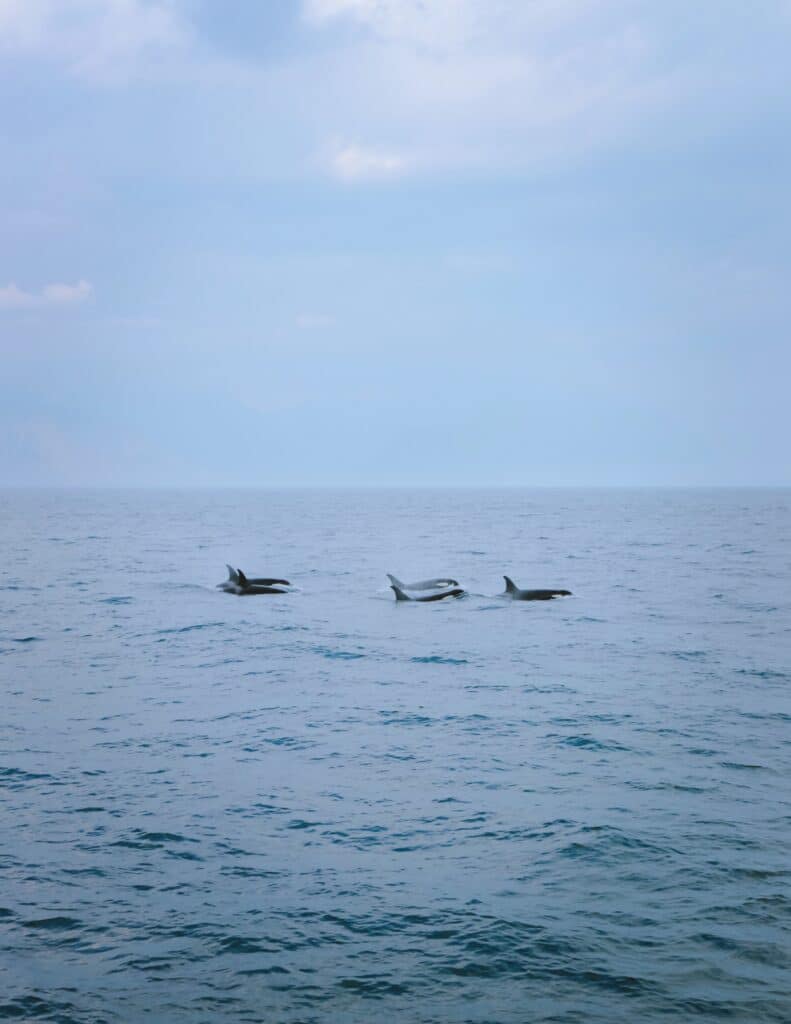
And with this knowledge, get out there and enjoy!
I hope this has been helpful for those of you wanting to visit Kenai Fjords National Park for the first time. This land is incredibly special to me, and my wish is for it to become special to everyone that stays here.
Kenai Fjords tells a story of constant change, and that story continues to be written.
I’ll leave you with this quote from John Muir…
But out of all the cold darkness and glacial crushing and grinding comes this warm, abounding beauty and life to teach us that what we in our faithless ignorance and fear call destruction is creation finer and finer.
John Muir, Travels in Alaska
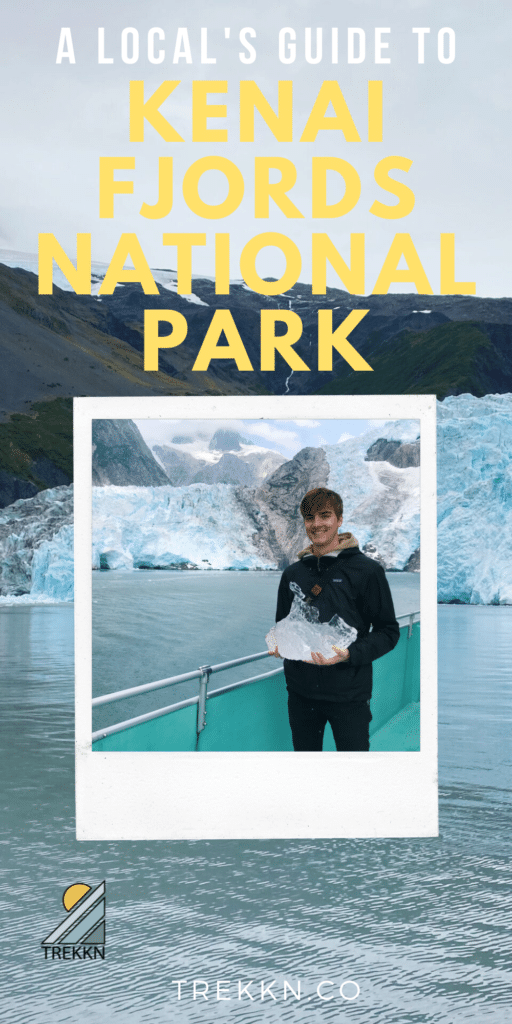
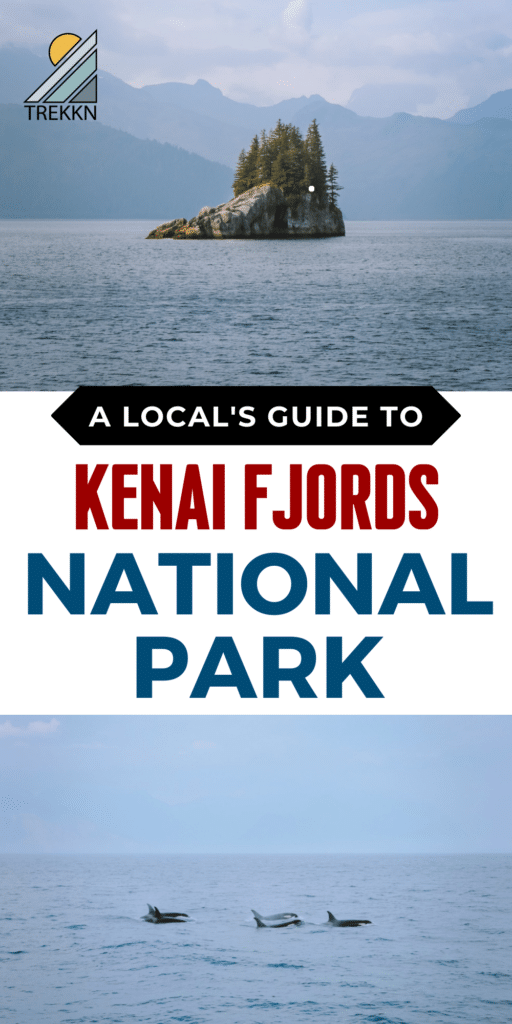
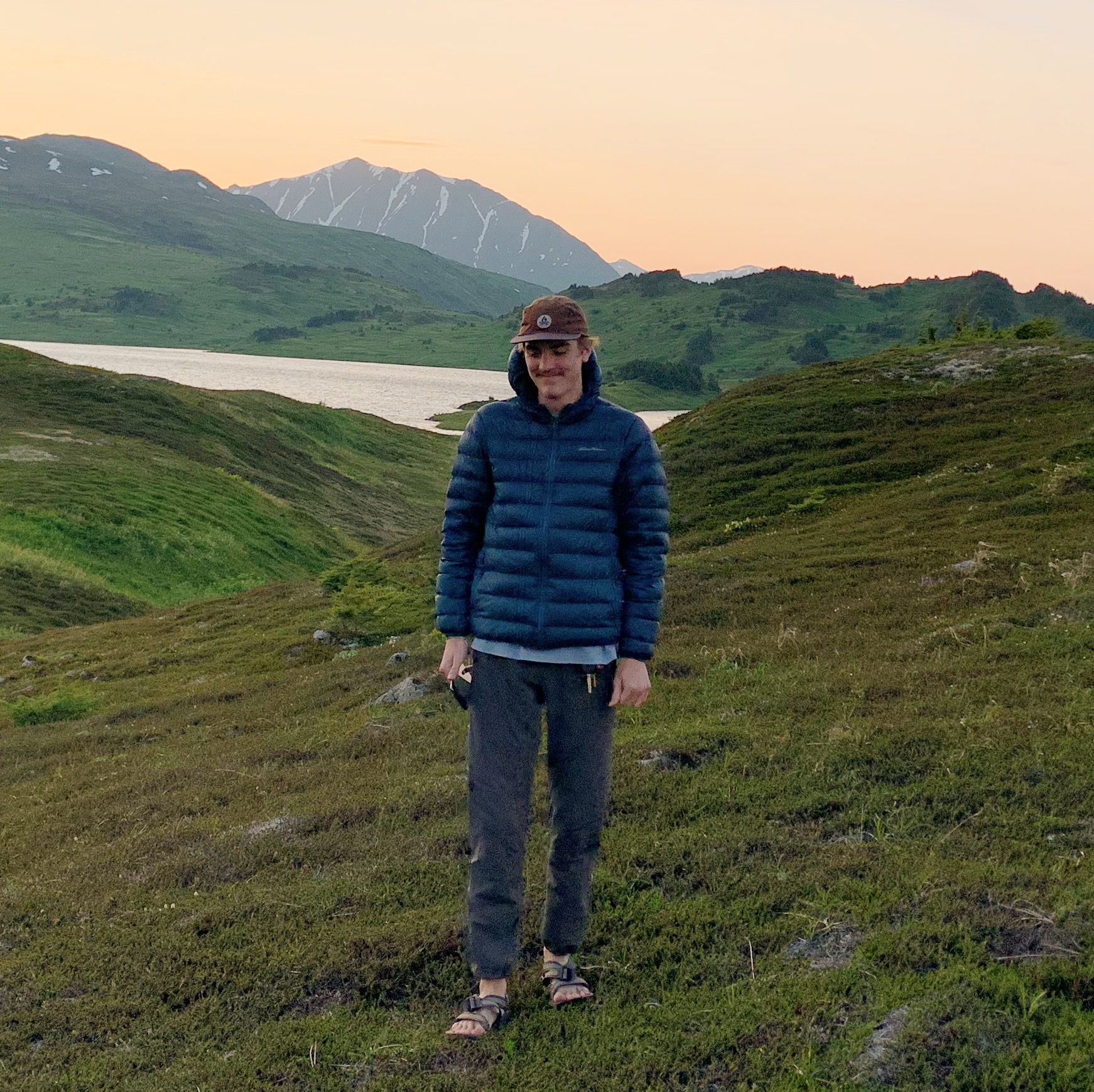
Josiah B gained invaluable experience while living on the road with his family, during which time he felt overcome with the desire to continue exploring. That search landed him in Seward, Alaska, where he currently resides. His love for the outdoors is welcome with open arms in the Last Frontier, and with an endless amount of hiking and backpacking to be done, he’s eager to share the best that Alaska has to offer.


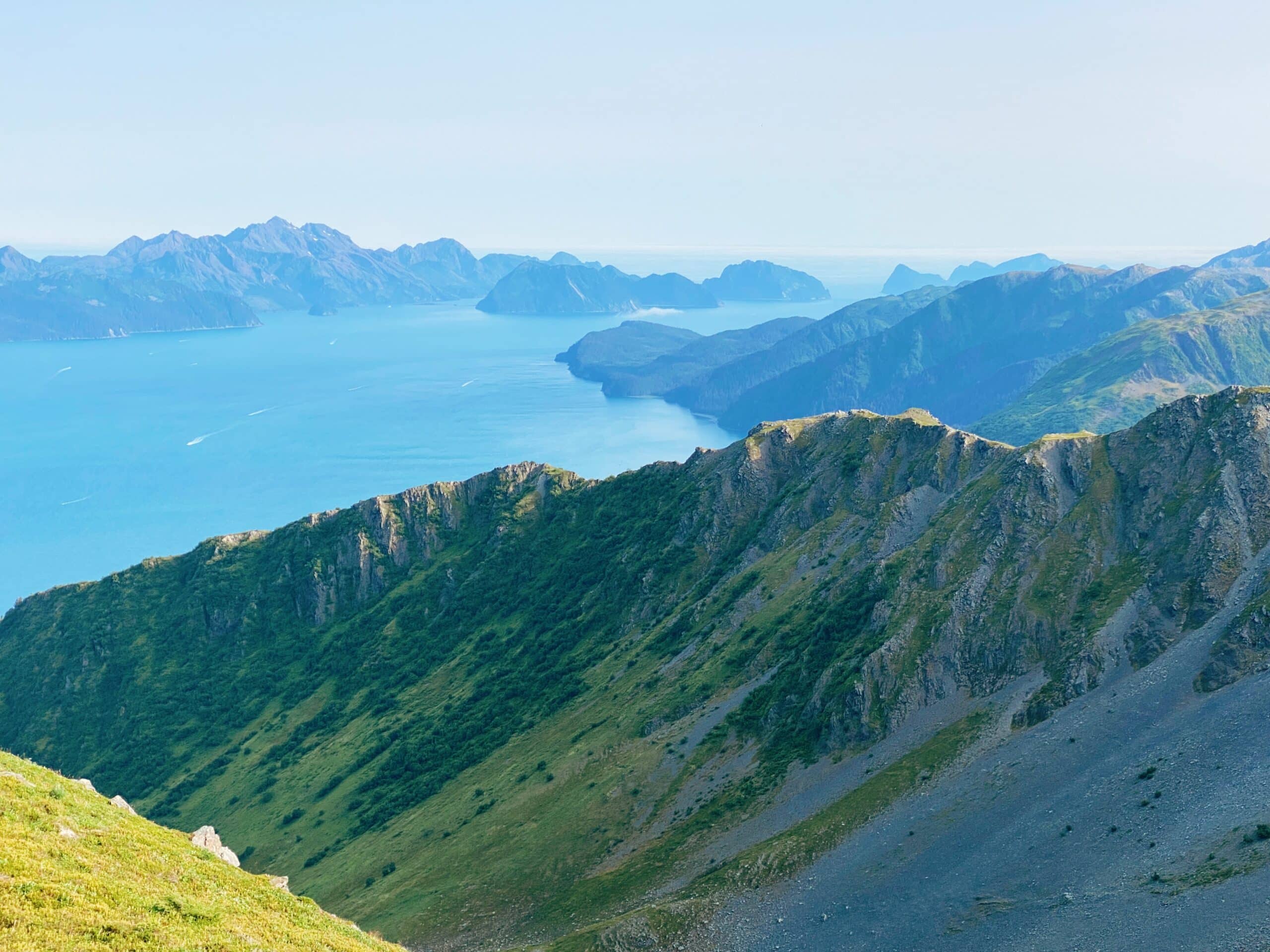
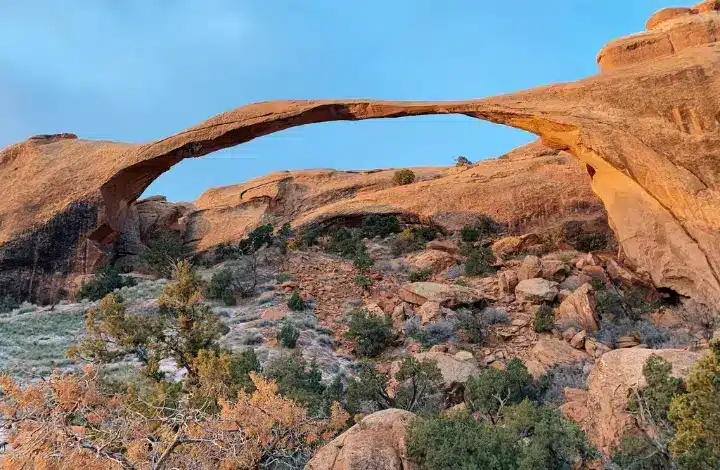
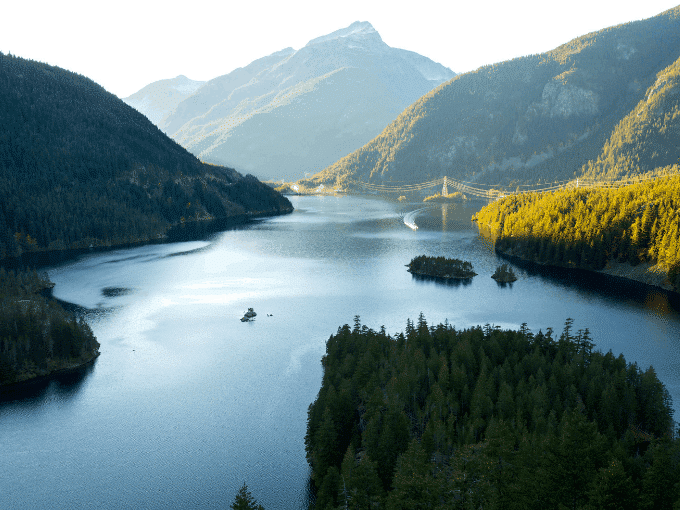
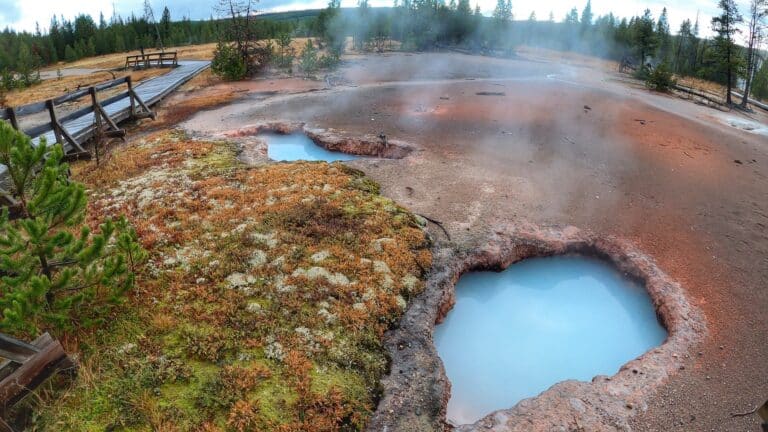
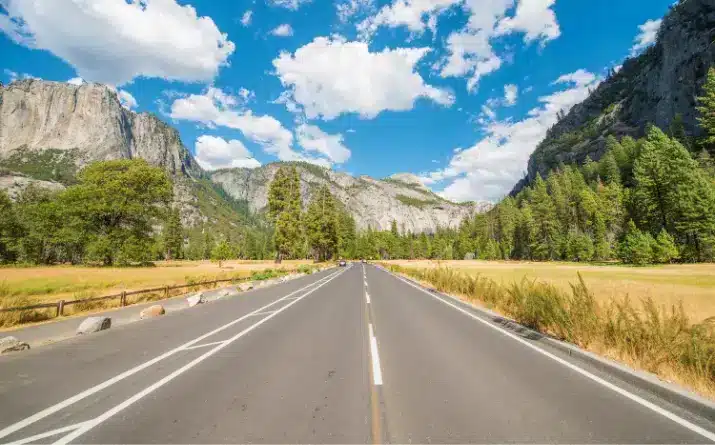
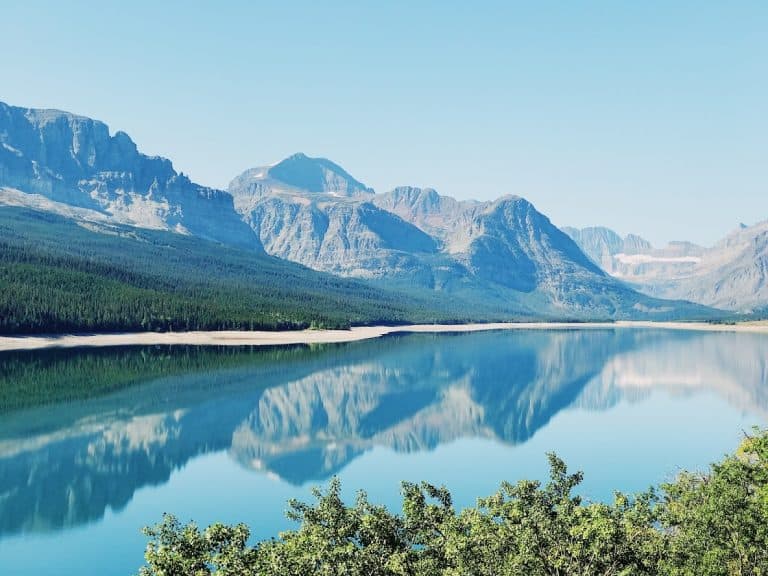
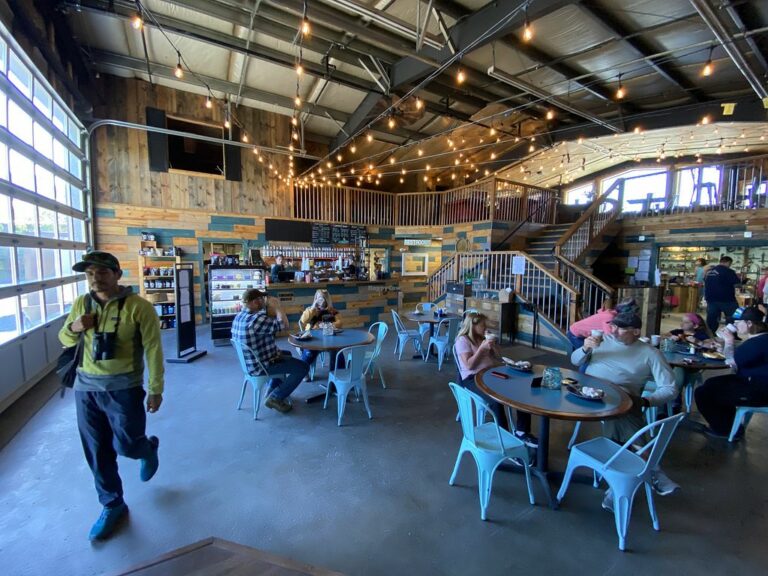
Josiah, we are used to adventuring on our own. Many articles speak of booking tours. Do we need a guide? Can we explore freely?